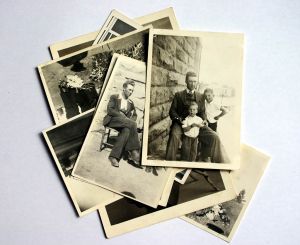More about researching your family tree…

I am often heard saying that learning is a lifelong experience – well – compiling your family history can be a lifelong search.
 If you have been following my occasional writing on the fascinating and sometimes frustrating search for your family story I hope that you will at least have collected information and recorded details about your own important dates and places, then your siblings and those of your spouse or partner and the children you have had. You probably also have collected quite a lot of information about your parents. Some of it was probably new to you; there may even have been some surprises. If you have acquired their marriage certificates you should know where your parents lived before they were married and the names of their parents. Your tree is beginning to sprout leaves.
If you have been following my occasional writing on the fascinating and sometimes frustrating search for your family story I hope that you will at least have collected information and recorded details about your own important dates and places, then your siblings and those of your spouse or partner and the children you have had. You probably also have collected quite a lot of information about your parents. Some of it was probably new to you; there may even have been some surprises. If you have acquired their marriage certificates you should know where your parents lived before they were married and the names of their parents. Your tree is beginning to sprout leaves.
Not all Australian birth, death or marriage certificates will provide the same information.
Prior to 1856 the records were collected from church records and most are not as detailed as later records. In the first 68 years of the colony there were births deaths and marriages that were not recorded. This was particularly true for Roman Catholic families because in the early days of Australia there was discrimination against Catholics and they were without clergy. James Donohoe is the author of a book called The Catholics of New South Wales 1788-1820 & their Families. It lists many Catholic families that lived in NSW during that time.
Dates and names aren’t always what you expect!
It is not unusual to find the date of marriage and the baptism of several children all occurring at the same time. Early settlements were scattered far and wide and the minister would travel around his parish and because of the mode of transport; horse, coach or sometimes even walking, and the great distances to be covered when he did visit a homestead or village it became an opportunity to marry and baptise members of his flock. He would write each ceremony in his notebook and add them to the church register when he reached his home at the end of each journey. This makes it necessary to also be careful about the place of marriage/baptism in your record because the settlement where they lived would inevitable be entirely different to the location of the parish church. For instance not all who were baptised or married in St. Philips Church of England in Sydney actually set foot inside the church. Now I had to check the spelling of Philips to confirm that it only had one ‘l’ and you need to check spelling too to make sure that you record names correctly. Be careful; I can mention a father with the name Philip who named his son after someone called Phillip. Wouldn’t you think it would be safe to assume that father and son would at least share the same spelling!
After 1856 it became a legal requirement to register births, deaths and marriages and full certificates carry a lot more very useful information. I do get frustrated when I view a family tree and can see that the place of death is recorded as being the location of the registry office where the death was registered.
It is exactly the same for family history as it is for any other form of history. Endeavour to always go to primary sources because you then have a better chance of ensuring that facts are correct. Record where you found the information because this referencing will give your research credibility.
More about names
It is important that you start your search from the present with details that you know to be correct and then go back generation by generation. Unless you have an extremely unusual name there are going to be many families with the same or very similar surnames. Trying to link yourself to a person of importance (or infamy) with the same surname is not very often successful. During your search you will find that many given names are repeated over and over in families. This can be quite helpful but don’t discard other names without making sure they don’t belong to your family. The same given names can create challenges as you try to work out; is this Simon the son, or is it the father, or the grandfather? To throw you completely off the track it was quite usual for a child of the same parents to be given the name of another child who had died leading to questions such as – was there only one Edward and he was born in 1801 or were there two one born in 1801 and another one born several years later. If you are asking that question then look for the death of the Edward who was born in 1801.
Goodness our chats seem to end quickly. I’ll look forward to sharing more about searching for our family tree next time.
image: twasa








 Proudly Australian owned and operated
Proudly Australian owned and operated